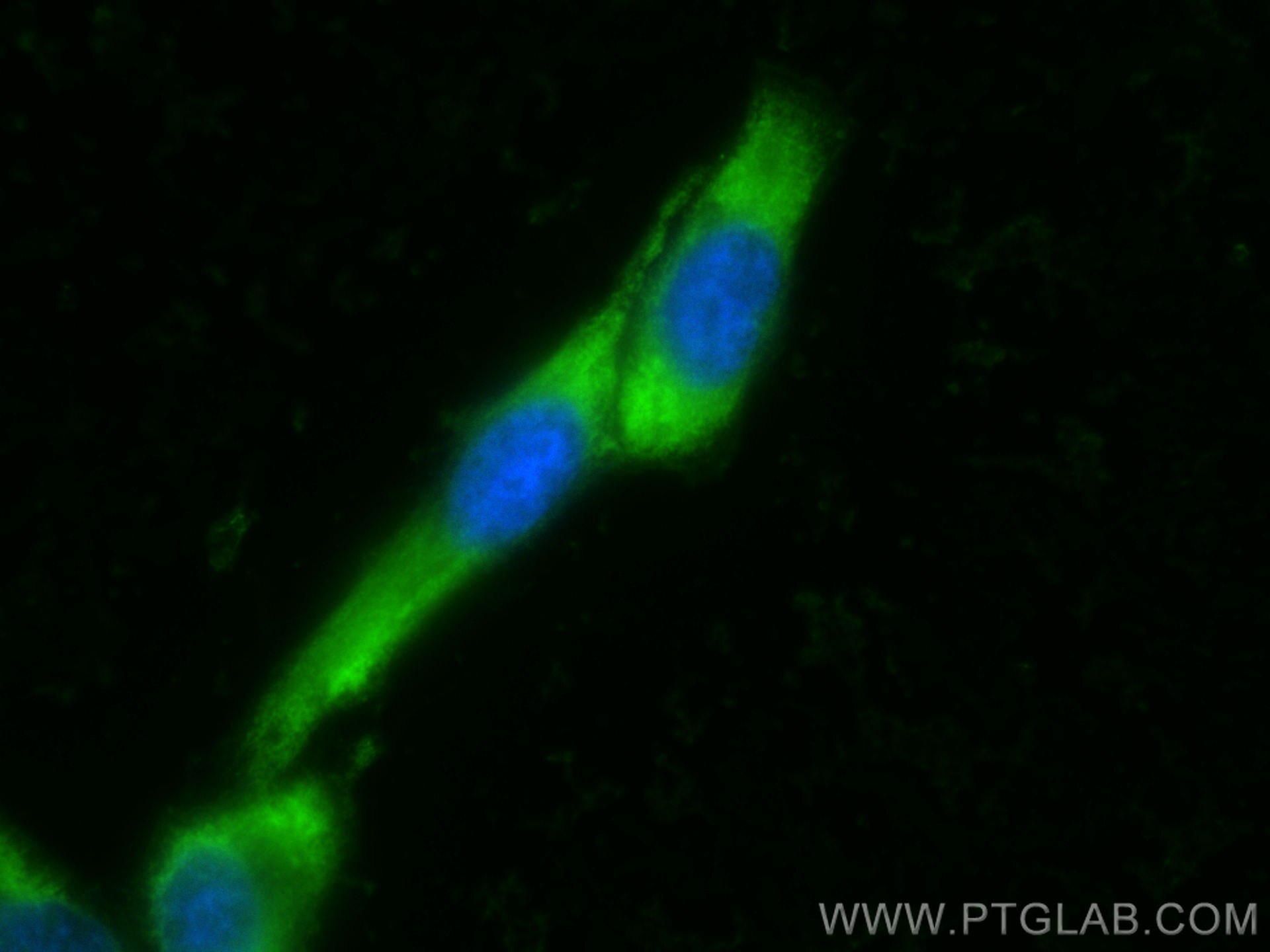- Featured Product
- KD/KO Validated
PA2G4 Monoklonaler Antikörper
PA2G4 Monoklonal Antikörper für IF/ICC
Wirt / Isotyp
Maus / IgG2a
Getestete Reaktivität
human, Maus, Ratte
Anwendung
IF/ICC
Konjugation
CoraLite® Plus 488 Fluorescent Dye
CloneNo.
3G10D9
Kat-Nr. : CL488-66055
Synonyme
Geprüfte Anwendungen
| Erfolgreiche Detektion in IF/ICC | HeLa-Zellen |
Empfohlene Verdünnung
| Anwendung | Verdünnung |
|---|---|
| Immunfluoreszenz (IF)/ICC | IF/ICC : 1:50-1:500 |
| It is recommended that this reagent should be titrated in each testing system to obtain optimal results. | |
| Sample-dependent, check data in validation data gallery | |
Produktinformation
CL488-66055 bindet in IF/ICC PA2G4 und zeigt Reaktivität mit human, Maus, Ratten
| Getestete Reaktivität | human, Maus, Ratte |
| Wirt / Isotyp | Maus / IgG2a |
| Klonalität | Monoklonal |
| Typ | Antikörper |
| Immunogen | PA2G4 fusion protein Ag7850 |
| Vollständiger Name | proliferation-associated 2G4, 38kDa |
| Berechnetes Molekulargewicht | 44 kDa |
| Beobachtetes Molekulargewicht | 38-42 kDa, 48 kDa |
| GenBank-Zugangsnummer | BC001951 |
| Gene symbol | PA2G4 |
| Gene ID (NCBI) | 5036 |
| Konjugation | CoraLite® Plus 488 Fluorescent Dye |
| Excitation/Emission maxima wavelengths | 493 nm / 522 nm |
| Form | Liquid |
| Reinigungsmethode | Protein-A-Reinigung |
| Lagerungspuffer | PBS with 50% glycerol, 0.05% Proclin300, 0.5% BSA |
| Lagerungsbedingungen | Bei -20°C lagern. Vor Licht schützen. Nach dem Versand ein Jahr stabil. Aliquotieren ist bei -20oC Lagerung nicht notwendig. 20ul Größen enthalten 0,1% BSA. |
Hintergrundinformationen
PA2G4 (EBP1), first identified as an ErbB3 binding protein, is a 38 kDa protein that is widely expressed in cultured cells and tissues. The presence of several functional domains such as a nuclear localization sequence (NLS), LxxLL and LxCxE suggests the involvement of Ebp1 in cell signaling pathways and gene transcription regulation. This antibody is a mouse mono-clonal antibody raised against full length PA2G4 of human origin.
Protokolle
| PRODUKTSPEZIFISCHE PROTOKOLLE | |
|---|---|
| IF protocol for CL Plus 488 PA2G4 antibody CL488-66055 | Protokoll herunterladen |
| STANDARD-PROTOKOLLE | |
|---|---|
| Klicken Sie hier, um unsere Standardprotokolle anzuzeigen |


